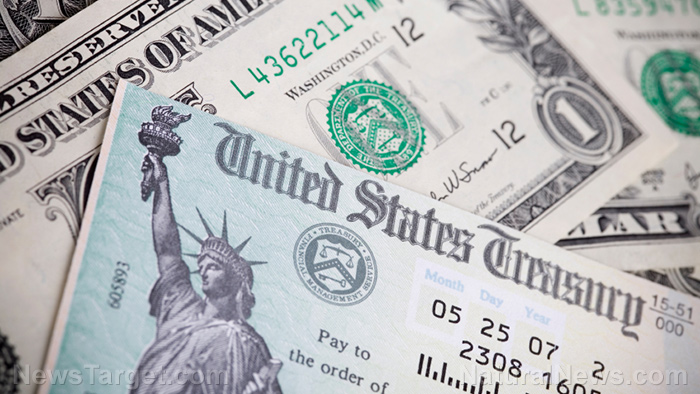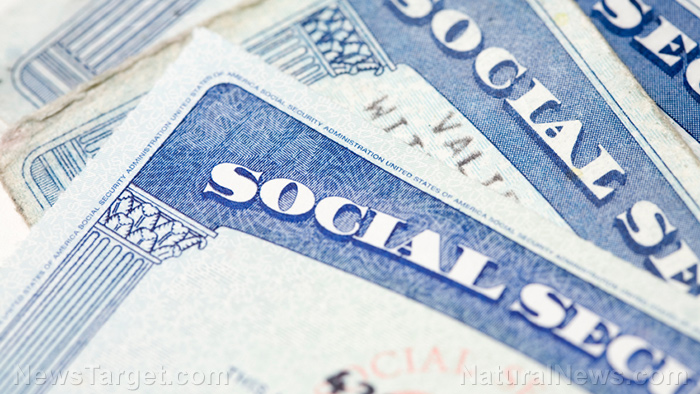EU diverts COVID money laundering funds to fuel the Ukraine war machine, as economic collapse looms
06/05/2025 / By Lance D Johnson

The European Union, under the guise of pandemic recovery and “common defense,” is quietly funneling billions in taxpayer money into Ukraine’s failing war effort—money originally earmarked to rebuild economies shattered by COVID lockdowns. As Brussels loosens restrictions on its €335 billion Recovery and Resilience Facility (RRF), member states are now free to redirect unspent funds toward militarization, bypassing democratic oversight while accelerating Europe toward economic ruin and global conflict. This brazen financial shell game exposes the EU’s true priorities: not the welfare of its citizens, but the perpetuation of a proxy war that risks spiraling into World War Three.
Key points:
- The EU has quietly repurposed €335 billion in COVID recovery funds for military spending, including arms for Ukraine, with minimal oversight.
- The money laundering that took place under the banner of COVID, now continues into Ukraine.
- Ukraine is a primary beneficiary of the European Defence Industry Programme (EDIP), which uses frozen Russian assets and joint procurement schemes to arm Kiev.
- Brussels has already spent nearly €50 billion propping up Ukraine’s war effort, with plans to mobilize up to €800 billion more for EU militarization.
- Critics warn these moves deplete public resources, accelerate currency devaluation, and push Europe closer to direct conflict with Russia.
- The EU’s SAFE initiative bypasses parliamentary approval, raising concerns over democratic accountability and fiscal recklessness.
From “pandemic relief” to perpetual war and currency devaluation
When the EU established the €650 billion RRF in 2021, it promised to revive economies crippled by lockdowns through green energy and infrastructure projects. Yet three years later, half the fund remains untouched—not due to prudence, but bureaucratic paralysis. Now, with a September 2026 deadline looming, Brussels has offered member states a shortcut: divert the money to “defense initiatives” like EDIP, a program explicitly designed to arm Ukraine.
“These alternatives could help the Recovery Facility to deliver additional important benefits from common European priorities, including in the areas of security and defense,” said EU Trade Commissioner Valdis Dombrovskis, framing war spending as economic salvation. But the fine print reveals a darker agenda. EDIP’s fact sheet admits its goal is “joint procurement with and for Ukraine,” funded partly by “windfall profits from frozen Russian assets”—a blatant admission of asset confiscation masquerading as policy.
The slush fund fueling World War Three
Since 2022, the EU has pumped nearly €50 billion into Ukraine through various channels, dwarfing the aid of individual nations like Germany. But the real scandal lies in how these funds are sourced. The Commission’s March proposal to raise €800 billion for militarization—via debt and taxes—coincides with the SAFE program, a €150 billion scheme approved without parliamentary debate.
Russia has dismissed claims of an impending attack on Europe as “nonsense,” accusing the West of manufacturing threats to justify plundering public coffers. The Kremlin warns that flooding Ukraine with weapons only prolongs bloodshed, while EU leaders like Ursula von der Leyen openly push for a “rearmed” bloc against a “Russian threat” that exists more in rhetoric than reality.
Economic warfare on the working class
While elites in Brussels plot trillion-euro defense boondoggles, ordinary Europeans face soaring inflation, stagnant wages, and the deliberate devaluation of their currencies. The same COVID funds once touted as lifelines for small businesses now vanish into the military-industrial complex, leaving citizens to foot the bill for a war they never voted for.
The European Commission has announced a sweeping defense investment strategy aimed at bolstering Europe’s military capabilities, supporting Ukraine, and accelerating military integration among EU member states. The EU’s own documents admit the endgame: a “Structure for European Armament Programme” (SEAP) that funnels VAT-free weapons deals to Ukraine, backed by a “Security of Supply Regime” to crush dissent over resource allocation. This is not economic recovery—it’s economic warfare waged by unaccountable bureaucrats.
Additional plans include:
- €300 million under the European Defence Industry Reinforcement through Common Procurement Act (EDIRPA) to incentivize joint arms purchases from European suppliers.
- €500 million to directly support ammunition production capacity.
- Grants to de-risk investments in defense manufacturing and promote commercialization of jointly developed technologies (e.g., via the European Defence Fund).
- Potential use of windfall profits from frozen Russian assets (pending Council approval).
- Ukraine’s inclusion in EDIP, enabling joint procurement and industrial cooperation.
- Direct support for Ukraine’s defense sector to strengthen its military resilience.
- Simplified joint procurement rules and VAT waivers for shared ownership of defense assets.
The global money laundering operation that took place under the COVID banner continues on to this day, as devalued currencies continue to be exploited into oblivion, propping up the failed proxy war in Ukraine, while maintaining the shell of the EU’s false authority.
Sources include:
Commission.europa.eu [PDF]
Europe.eu [PDF]
Submit a correction >>
Tagged Under:
corruption, COVID funds, currency devaluation, defense industry, economic collapse, EDIP, EU, Inflation, military spending, NATO, proxy war, RRF, Russia, safe, SEAP, Ukraine, Von der Leyen, War
This article may contain statements that reflect the opinion of the author
RECENT NEWS & ARTICLES
COPYRIGHT © 2018 GOVERNMENTDEBT.NEWS
All content posted on this site is protected under Free Speech. GovernmentDebt.news is not responsible for content written by contributing authors. The information on this site is provided for educational and entertainment purposes only. It is not intended as a substitute for professional advice of any kind. GovernmentDebt.news assumes no responsibility for the use or misuse of this material. All trademarks, registered trademarks and service marks mentioned on this site are the property of their respective owners.




















